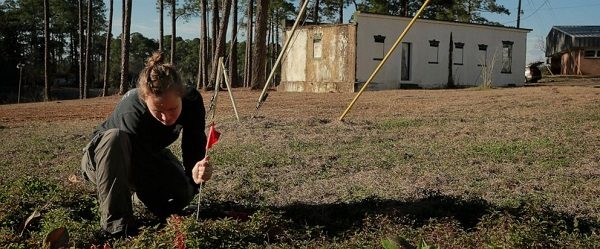
University of South Florida forensic anthropologist Dr. Erin Kimmerle will be back at the former Dozier School for Boys on Monday, the same place where she spent four years researching and unearthing the remains of boys buried on the massive 1,400-acre site in Marianna, located about 60 miles (96 kilometers) northwest of Tallahassee.
She'll lead a team on a mission to see if 27 anomalies discovered by a contractor using ground-penetrating radar on the site are likely to be human graves.
"At the end of a couple of weeks we'll have a real good sense of what's going on and hopefully that will provide some clarity. There are a lot of people really invested in that history and the men and boys who were there. It will be nice to give them some answers," Kimmerle said in a phone interview Friday.
There could be a lot of explanations for the anomalies. During the four years of research of the school's Boot Hill grave sites that ended in 2016, Kimmerle's team identified what they thought were 50 human graves, and eventually found 55. But they unearthed a lot more than human remains.
"It could be tree roots, root balls or buried garbage, trash or animals," she said. "Even what we found at Boot Hill with that burial ground, is there was still a lot of both historic and modern buried trash and syringes and buried animals. There was a lot of that mixed into the site. So that wouldn't surprise me. I'm kind of expecting to find a mix of things."
The anomalies were found just across a road from where the reform school had a barn and pasture as part of a working farm it operated decades ago, so there could be farm animals buried there, she said.
The reform school opened in 1900. It later became known for decades of abuse, including beatings, torture and rape, and the state opened an investigation into the facility's past in 2009. The school was closed in 2011. The Legislature apologized for the abuse two years ago with many of the survivors gathered at the Capitol for the vote.
Kimmerle's team previously extended their search far beyond the Boot Hill graves, about 30 of which were marked with plain, white iron crosses with no explanation of who was buried beneath them. They examined historical photos to see what areas of the school now overgrown with trees and brush were once open fields. They researched records on deaths that occurred at the school. There were nearly 100. Records show that some of the boys' bodies were shipped back home, but that wasn't necessarily accurate.
Kimmerle noted that records show one boy was buried in Philadelphia, but when researches checked the grave there, it was empty.
If any of the newly discovered anomalies turn out to be human remains, Kimmerle said the pattern of where they are buried indicates that they were clandestine burials. In other words, whoever buried the bodies didn't want anyone to find them.
That's when the initial work would stop and the Florida Department of Law Enforcement and a medical examiner would be called. A full excavation of the site wouldn't happen until authorities had a chance to investigate the findings.



Comment: See also: Dozens of boys' bodies discovered buried at Florida school of horrors